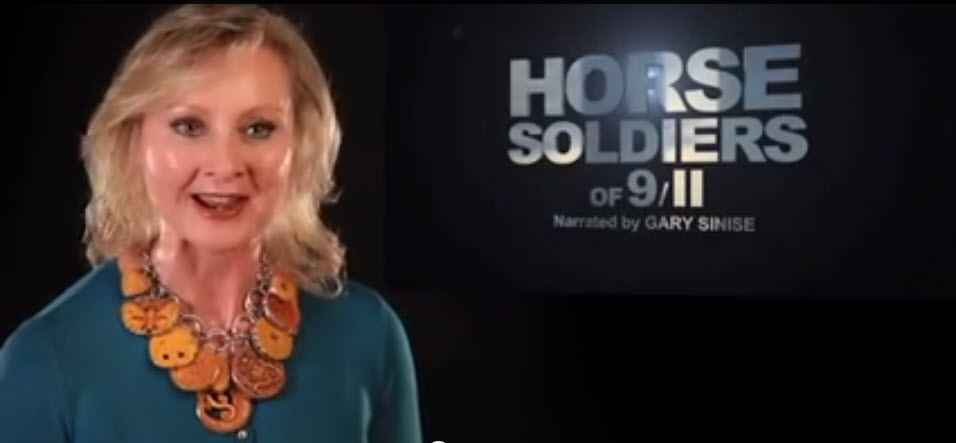In this video, Alex Quade gives tips and serious advice for journalists who want to cover wars from the front lines.
There’s a bag over my head and I can’t breathe. Heavily armed men in ski masks search me, strip me of watch, wallet and ring, and push me face down in the mud. I’m lying here spread eagle, heart racing, wondering if the gunshots I heard killed any of my colleagues. If I speak, I’ll get kicked. My captors pull me up by my thumbs and walk–make that drag–me around. I can’t see. I’m disoriented and my mouth is dry. Then we stop. I stumble. They force me to my knees, placing my hands atop my head, execution style. This is not a good sign. I feel a gun at the back of my head…
Wait a minute! I signed up for this!
It’s all part of a realistic scenario designed by 14 ex-British Marine Commandos to teach nonmilitary types, like myself, how to stay alive in hostile environments. People taking this weeklong intensive course, run by Centurion Risk Assessment Services, are usually headed to nasty or politically unstable parts of the world. Centurion trains aid workers, banking and oil executives, project developers and journalists. My group is the latter: Terry, an Irish freelance photographer who usually covers animal rights protests; Philip, a French adventure journalist; Graham and David, engineers who set up broadcast facilities for the British forces; and me, a freelance television reporter/producer, and the only woman amongst all these men. Boy, were these ex-Commandos–I mean instructors–going to have a good time at our expense!
Ambush 101
Carjacking anyone? We’re driving down a lovely country road in rural England in our Land Rover, and BAM! A firebomb blows up beside us. Masked men brandishing weapons jump out of nowhere and surround us, then yank us out onto the ground. (That’s when the smelly canvas bags go over our heads.)
“With the flick of a finger, control of your life has gone to someone else. Once that happens, the bottom falls out of your world,” explains instructor Jon Seward, in a debriefing about the initial shock of capture. “The only thing you can do is try to turn the tables against them. Be a ‘gray man’; don’t be a nuisance; don’t be meek. Listen. Observe. Merge in with the other captives; don’t be singled out as a troublemaker.” (This, after David tried to talk to our captors and was answered by the sound of a gun being cocked.) A lesson in awareness (judging by the amount we hostages were sweating, not one we’ll likely forget) that could also be applied to carjacking situations.
Survival tip: If covered by a hood or bag, suck it as close to your face as possible. It may feel claustrophobic, but you’ll be able to breathe fresh air through the bag (otherwise, the space is filling up with the carbon dioxide you just breathed out).
Booby Traps for Beginners
Maybe you’re a journalist and you’ve written something that makes someone angry (it happens!) Now the person wants to get even. With that in mind, our instructors take us to examine our car. We squat down in front of the grille to look under it.
“Don’t be obvious about it; bend down and retie your shoes, or drop and pick up your keys,” says instructor Seward. Sure enough, there’s something stuck underneath, behind the front tire. Graham walks around for a better look, and BANG! We all hit the deck. Graham set off a virtually invisible trip wire. We brush ourselves off and look in the car. Wires snake between the seat and the door–another booby trap. As we study it, BANG! We all throw ourselves on the pavement again (ouch!).
David set off another trip wire. Moral of the story: anything can be booby trapped: telephones, food cans, flashlights, Thermoses, televisions, video boxes, envelopes, etc. (Having a sweet tooth, I almost fell for the candy box booby trap trick.)
Survival tip: If in any doubt, don’t touch it!
Ballistics and Body Armor
And now, for some “Private Benjamin” moments. If you’re like me, you can’t tell an M-16 from an AK-47, or a mortar from a rocket-propelled grenade launcher. The important thing is, if you hear a shot, drop! Then roll or crawl to cover. (A lesson repeated throughout the course, leaving me covered in bruises.)
Our instructor strolls with us into an area being shelled by (fake) mortar rounds. BAH-BOOM! I throw myself onto the gravel and roll down a nettle-covered embankment. (Yow! I think the ex-Commandos enjoy putting us through this. Did I mention it was pouring?) With an “all clear,” we stroll right into a fake sniper’s alley. BAP-BAP-BAP-BAP-BAP! I dive into a big mud puddle (great!).
We learn, in situations like these, that body armor (flak vests and helmets) can increase your chances but they don’t make you invincible. (FYI: don’t even think about wearing necklaces, chains, crucifixes, whatever, underneath a flak vest. If you get hit, even if the plates stop the bullet, there will be a big dent and lots of pressure. Enough to push whatever accessory you’re wearing into your skin. Even people wearing body armor can be wounded or killed.
Survival tip: If you hear it, hit the deck! Which brings us to…
Field First Aid
My comment, “He’s dead! Leave him!” didn’t exactly get a positive response from the ex-Commandos in our first emergency scenario. (On the other hand, if bullets are flying, we need to worry about our safety first.)
First aid in a hostile situation may mean being far from a hospital or even a first aid kit. The goal is to stabilize the injured and get them out of there. We had been lectured on the basics: Clear the airway, check for breathing and circulation, then tackle the “big blood wounds.”
According to instructor Jan Hosking, improvise: “Shirts can become bandages. Ropes or cables become tourniquets. An umbrella tied to a broken leg is a splint.”
Instructor Paul Livingston shows us how to make stretchers out of virtually anything–did you know you can make one using six rocks, pieces of rope and a blanket? And even I learned how to carry a man to safety (all by myself!) on my shoulders using the “fireman’s lift” technique (though I did need ibuprofen for my aching muscles later).
We go through practice drills treating all manner of nasty (fake) wounds gushing lots of (fake) blood: car crashes, impaled objects. (Those ex-Commandos should win Oscars for their acting performances.)
Survival tip: Make sure the area is safe before going to help the injured. Get them to a safe area before doing first aid.
Walking Into a Minefield
If you travel anywhere “off the beaten track,” this one’s for you. After learning to identify various types of anti-tank and anti-personnel mines in class, we go to a field to see if we can spot them. (This is not as easy as it looks.) Of 12 mines in about a 10-foot-long area, our group can only find one or two.
Later, we go to another minefield for a clearing demonstration. Two ex-Commandos lay on their stomachs, protective faceguards and helmets on, gently prodding the ground ahead of them (a taped-off “safe” path behind them already clear), when BOOM! We all hit the deck. The instructors scream in pain–at least one of them does–the other seems, well, dead. Time to put the first-aid training to use.
We quickly drag the dead or unconscious one to a “safe area,” back down the clear path. Poor instructor Rick Strange! I very ungracefully fall on top of him (oops!) while dragging him. This smells like another practical scenario!
I leave that instructor to David and Terry, who are making a stretcher, and rush to help the other mine-clearer, instructor Seward, who is moaning and gushing (what I now know to be fake) blood from a (fake) blown-off hand. Graham and I apply pressure to the (fake) bloody stump (ugh!), bandage it up and help him to the safe area.
Survival tip: If you see dead animals, it’s a good sign there may be mines in the area. Retrace your same steps out of the area.
Checkpoint Etiquette
Onto another potentially unsafe area: checkpoints. (The ex-Commandos are back in intimidation mode for this lesson, forget the pints we had shared in a pub the night before when they were off duty!)
Driving up to the roadblock, we see two ex-Commandos/guards toting machine guns. We stop, and other armed men come out of the bushes and surround the car. One by one, we are escorted from the LandRover for an “interview” with the guard in charge. (Luckily, my colleagues and I got our stories straight in route.) No-nonsense guard Mick Downs tries to trip us up. Talk about cat and mouse! A colleague and I make it through the interrogation. But then another colleague folds some bills inside his passport for the guard to “inspect.” This does not go over well. It gets worse when another colleague offers a bribe straight up. The guards lead him off at gunpoint and stand him with hands on head and trousers around his ankles (he shall remain nameless to save him from embarrassment).
The situation is quickly turning ugly. I call out, asking if there’s a problem and offering to help. “Yes, there’s a problem,” Downs shouts. “Your colleagues just tried to bribe me. We are not corrupt. We are with the government.” I try to diffuse the situation, saying there had been a terrible mistake and that my colleagues mean no offense–and I ask if there is anything we can do to make up for this transgression. Downs says there is a special “road tax,” costing so much per person and per car to get through. (It doesn’t matter whether they call it a morale booster or special tax; it’s still a bribe, and you are not in much position to negotiate.) By now the guards had already gone through our car and helped themselves to cartons of cigarettes and bottles of whiskey.
“Just answer the questions. Stay calm and keep your wits about you,” instructor Downs says in a debriefing. “Also, keep your hands where they can see them. They’re just as nervous as you, and you don’t want to appear threatening.”
Survival tip: Don’t offer a bribe. If they want something, they’ll ask for it. If they threaten you, turn around and go back. It’s not worth your life to get through a checkpoint.
Riots and Other Stories
You don’t need to go to a war zone to feel threatened. Witness the risks journalists faced when covering the September 11 attacks. And protests, demonstrations, marches and even sports events can quickly turn ugly.
“Police are the best indicator of the level of trouble expected,” says instructor Peter Scotland. “How they are dressed [how much protective gear they have] can give you a clue about what could happen.”
Security forces deal with protestors differently all over the world. In recent news events, police have used pepper spray to disperse crowds (tip: bring a biking pollution mask and swim goggles–you may look like a dork, but you’ll be laughing while everyone around you is crying). If they bring out tanks to disperse rioters, Scotland says, beware. “Tank drivers have limited visibility and may smoosh whatever is in their path unintentionally.”
If you are near the rioters, beware of homemade petrol bombs or Molotov cocktails. Our instructors demonstrate that once a petrol bomb hits something, its flaming liquid splays out-so you don’t want to be anywhere near it (especially if rioters mixed sugar or dishwashing liquid in with the petrol to make it stick to the skin like napalm).
Survival tip: Wherever you are, always plan an escape route and a backup.
Oh, My Aching Back!
By the end of the course, my colleagues and I are hyper-vigilant and uber-aware. At the smallest noise, we dive for cover. The ex-Commandos laugh at us, but they also know they met their goal: to make us more aware of our surroundings and able to assess any possible risks.
“You never know when you’ll need to use what you’ve learned,” Philip concluded. Terry agreed. “The first aid left me feeling confident that I could manage well in a serious medical emergency, be it a car crash or a conflict situation.” We all came away wondering how we had managed to scrape by without the training.
“In France, there is no course like this,” said Philip. “Many television stations use very young rookie reporters who can be a little crazy. They go into dangerous places with no information [and no experience].” He wonders if training could have saved any of the 24 journalists who lost their lives covering various conflicts around the globe in 2000, or any of the 14 others who died in the first 10 months of 2001.
Hopefully, with more courses like these, those numbers will be reduced. Meanwhile, I’m proudly showing off my bruises (I earned them!) and scrubbing the dirt from my clothes.





